When it comes to carpet, nylon and polyester are two of the most popular synthetic carpet fibers on the market. If you’re trying to decide which is best for you, considering a few of the key differences between nylon and polyester is a good place to start.
Nylon Fiber
Nylon is a great carpet fiber with terrific product benefits. It is strong, durable, static-free, easy to maintain and dye, and colorfast. It has very versatile styling possibilities, maintains fiber height, and resists soiling or staining. It also has an excellent resistance to abrasion, crush and wear, insects, molding, mildew, rot, and many chemicals.
When treated with stain protection, nylon can also withstand stains and soiling. Because of its high durability, it is perfect for high-traffic areas.
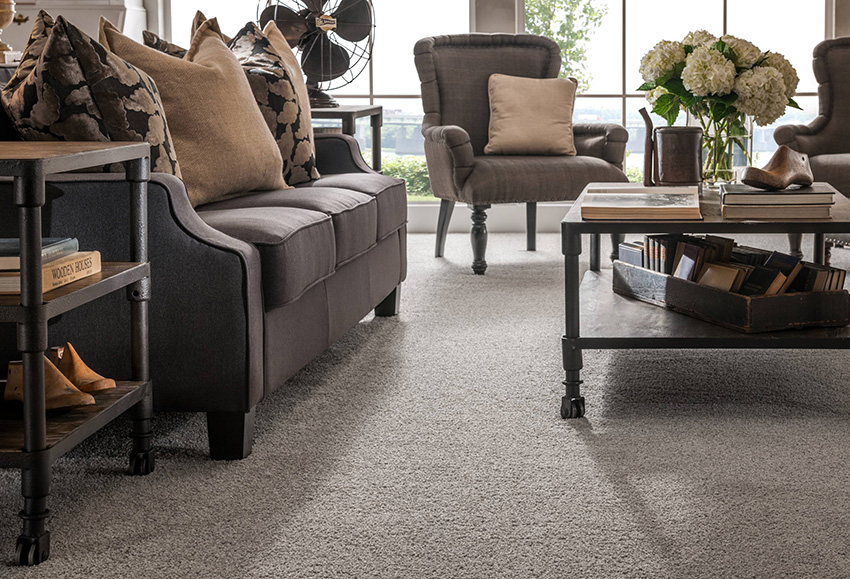
Polyester Fiber
Polyester is known for its luxurious look and feel, and it wide variety of bright, bold colors and styles. Unlike nylon or wool, polyester carpet is not crush-resistant and high-traffic areas will wear down and lose texture comparatively faster. It is less expensive than other fibers up front, but may need to be replaced more frequently.
Polyester is, however, more stain-resistant than nylon and just as resistant to mold and mildew. It is also non-allergenic. It is ideal for lower traffic areas such as bedrooms, offices, or TV rooms.
PET Polyester carpet (polyethylene terephthalate) is well-known for its environmental benefits. It is often made from recycled materials such as plastic drink bottles and results in a more sustainable carpet.

Polypropylene or Olefin Fiber
Olefin offers good stain and moisture resistance, but cannot compete with nylon and polyester when it comes to wearability. Unlike nylon, it is not resilient crushes easily underfoot and tends to lose texture. It holds up best in a loop pile construction or high, very dense cut piles where crushing isn’t a concern.
Unlike other fibers, polypropylene does not absorb water, which provides to two major benefits:
First, it is perfect for spaces where mildew is a concern (i.e. outdoor carpet or rugs). This is a great advantage if you live close to the beach!
And, secondly, it must be solution-dyed. In the solution dyeing process, color is built into the actual fibers while they are formed. As a result, that color won’t fade, even when exposed to intense sunlight, bleaches, atmospheric contaminants, or other harsh chemicals or elements. It lends itself to colorful styles and designs and is easy to clean.
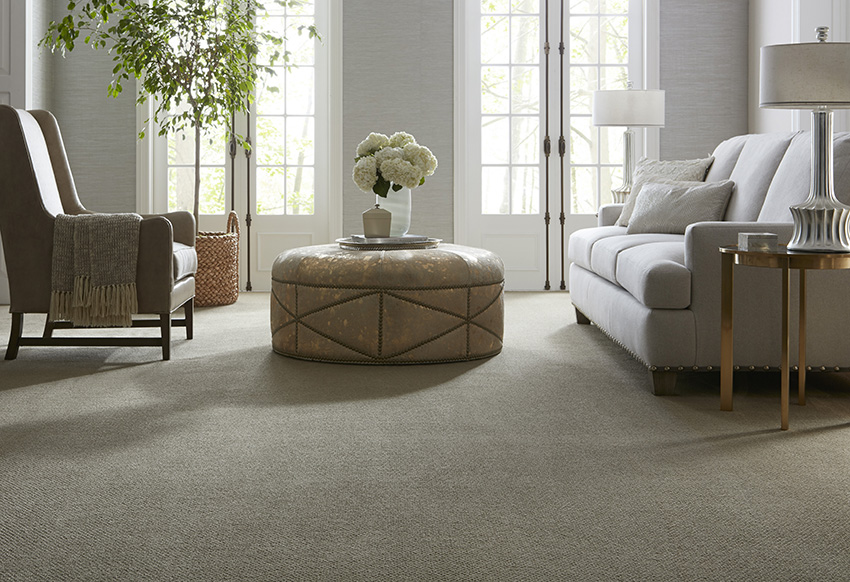
Wool Fiber
Wool is extremely soft and luxurious to the touch, but resilient and durable enough to perform well in high traffic areas without wearing out. However, it absorbs moisture and can potentially be prone to mold and mildew in damp areas.
Although it absorbs moisture, the fibers itself naturally repel water and stains due to a unique membrane covering the fiber core. That natural membrane is what allows wool to be so easily cleaned. Water and other spills stay on the surface, allowing spills to be blotted up instead of absorbing and staining. That membrane also keeps dirt and dust from falling below the surface, making them easily vacuumed up, keeping your wool carpet looking clean and new.
Wool’s natural elasticity allows it to stretch and snap back to its original size resisting crushing, even under heavy traffic and furniture.
Not only is wool all-natural, it also has many natural benefits. It is naturally non-allergenic, static resistant, flame resistant and soil resistant (although not inherently stain-resistant). It is a renewable resource, environmentally-friendly and biodegradable. Wool also improves and maintains indoor air quality by absorbing contaminants without re-emitting them.
All that said, wool must be maintained properly. It tends to fade in sunlight, has low resistance both to stains and to the chemicals used to remove stains. Unlike synthetics, can attract and suffer damage from moths, beetles, and other types of insects.
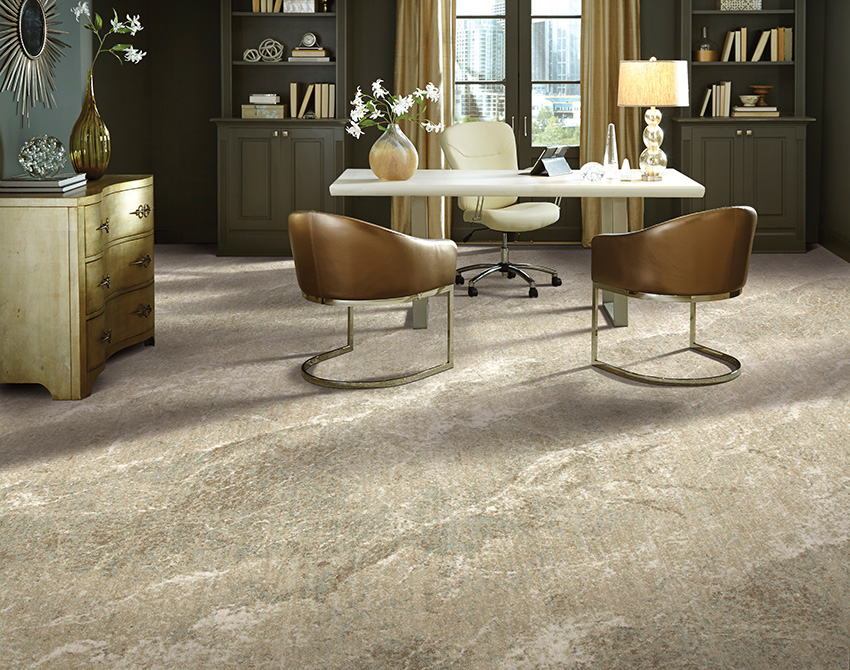



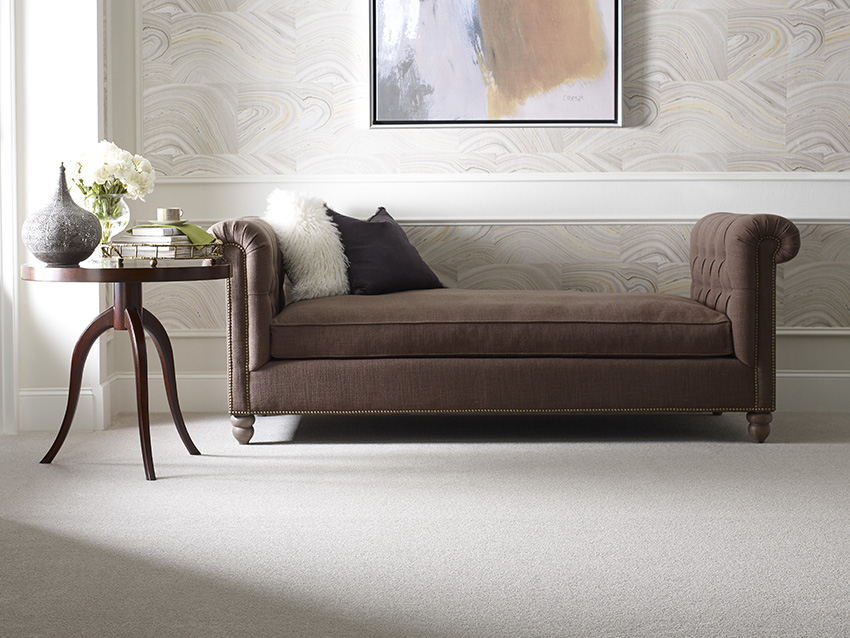
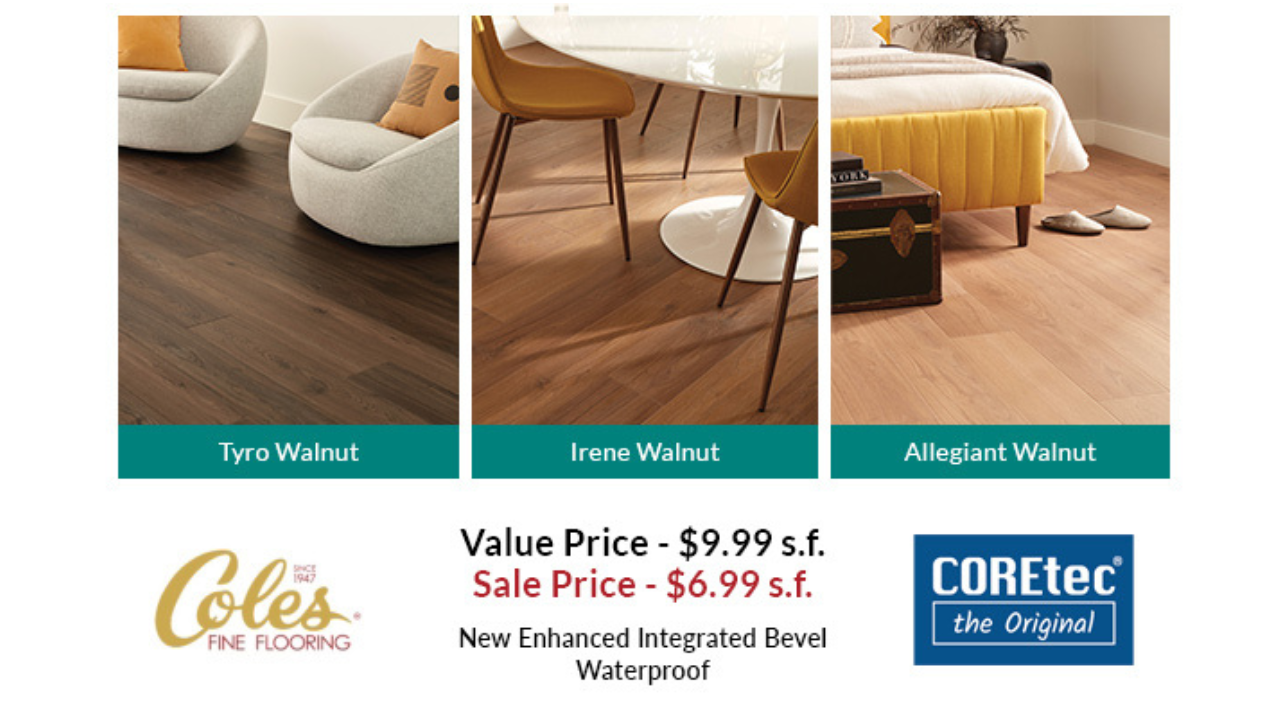

 Prelude Version 2.1
Prelude Version 2.1